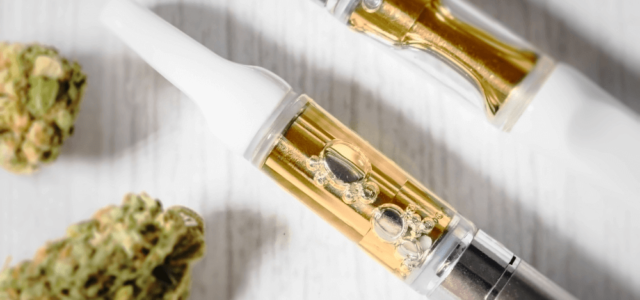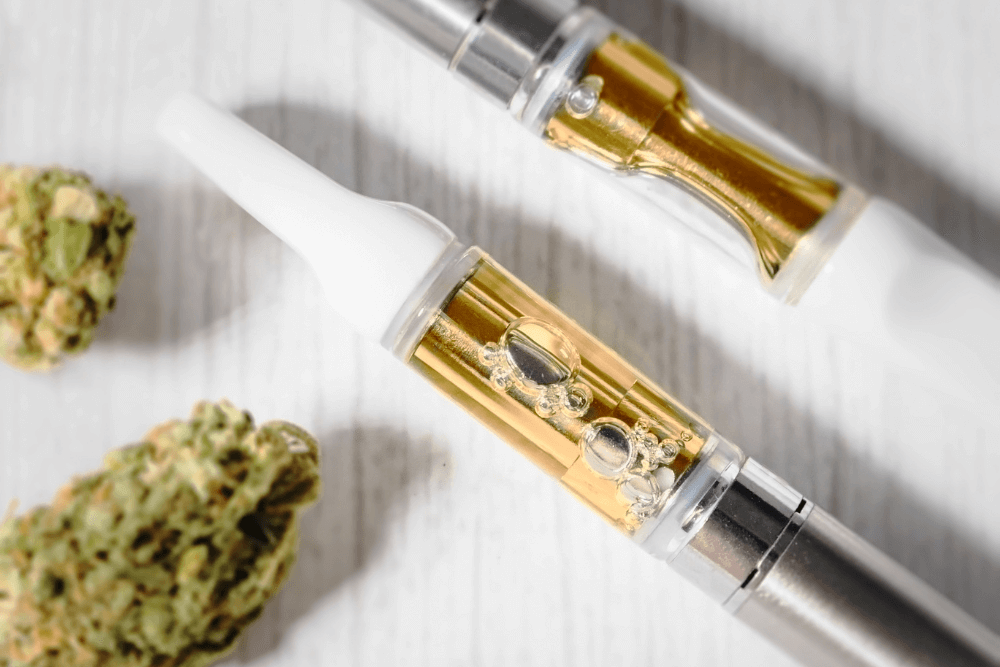Committee Blog: Regulations in the Inhalable Cannabis Space – A Call for Sensible Flavor Regulation for Cannabis Vapes
Marijuana Laws, Regulations, & Politics June 13, 2024 MJ Shareholders 0


Published on behalf of NCIA’s State Regulations Committee (SRC)
As the cannabis industry continues to evolve, so do the discussions around regulations, particularly concerning flavor additives in inhalable cannabis products. This blog post represents the members of NCIA’s State Regulations Committee current reflections on the successes and shortcomings of existing cannabis vape regulations, focusing on flavor limitations, safety considerations, quality specifications, and labeling practices. While technical, this topic has a tremendous impact on cannabis brands and consumer safety.
First, for those who might question the need to add flavors to cannabis vapes, it’s essential to highlight the following points regarding why flavors are added and the benefits they bring:
Restoration
In some cases, such as with cannabis distillates, processing or manufacturing techniques can alter or remove natural cannabis flavors from vape liquids. Adding cannabis flavors back simply returns the final product back to nature’s intended taste profile, providing consumers with a comprehensive vaping experience.
Mimicking Smoking Sensation
For individuals transitioning from traditional smoking to vaping, flavors can mimic the sensations and tastes they are accustomed to, making the switch more enjoyable and satisfying.
Customizing Preferences
Consumers have diverse preferences, and adding flavors allows them to customize their vaping experience based on their personal taste preferences, whether they prefer fruity profiles or classic cannabis flavors. Akin to aromatherapy, consumers may also predict the mood impression they will experience by vaping a particular flavor.
Providing Consistency
Consumers often expect certain flavors in products based on their product familiarity so it is important for brands to be able to deliver a consistent vaping experience wherever their product is sold despite changes that the consumer may otherwise notice due to harvesting variability of the cannabis or limitations on strain availability across borders.
Meeting Market Demands
The vape industry is driven by consumer demand for a wide variety of flavors. Adding flavors allows vape manufacturers to meet market demands and cater to the preferences of different consumer segments. In regions where certain flavors are restricted or banned due to regulation, the legal vape industry is challenged to compete with the illicit market, where flavors would continue to be available. However, these illicit market alternatives may not undergo the same safety and quality standards as legal vape products, potentially posing risks to consumers’ health. By offering a wide range of flavors, the legal vape industry can provide consumers with safer alternatives and help combat the proliferation of potentially unsafe, unregulated products.
Personal taste aside, the dangers of unsafe flavors in unregulated products are real, as was demonstrated in 2019 through cases of EVALI (E-cigarette or Vaping Associated Lung Injury). As detailed in this piece, manufacturers need to follow best practices to protect vaping consumers no matter if they are in regulated cannabis, unregulated cannabis, or the CBD/hemp markets.
Overall, the addition of flavors to cannabis vapes is not just about enhancing taste but also about meeting consumer expectations and improving consumer safety. Flavors create consistency in products and are common across consumer products we already enjoy daily. Consumers are trained to expect flavor variety and consistency in traditional e-cigarettes, and cannabis vapes should be no different.
What’s Working?
We commend states like Oregon for taking a pragmatic approach by allowing a broad range of natural, artificial, and cannabis-specific flavoring ingredients while rightly prohibiting scientifically known inhalation hazards. This approach provides broad room for innovation while protecting the public from valid safety risks.
What’s Not Working?
Conversely, restrictions on flavor ingredients to only natural sources, as seen in states like Nevada, California, and New York, are unnecessarily limiting and not scientifically justified. Further limiting flavoring terpenes to being cannabis or hemp-derived, like in Connecticut, also hinders creativity, imposes higher costs, and potentially pushes consumers towards unregulated alternatives. Likewise, enforcement actions to prevent adolescent access to vapes should be prioritized over regulations to limit flavors or labels thought to be more appealing to adolescents.
Everyone’s goal should be to provide consumers with the safest possible experience when using inhalable products containing flavors. What’s safe to eat isn’t always safe to inhale.
What’s Working?
Responsible suppliers implementing robust quality and regulatory pre-qualification measures for all flavor ingredients is a positive step. Vendors should be vetted, approved, and responsible for the products they supply. Encouraging manufacturers to develop comprehensive toxicological programs tailored for inhalation safety is also crucial.
What’s Not Working?
Requiring flavors or flavor ingredients to be listed on the pharmaceutical FDA IID for inhalation is inappropriate and does not guarantee a safer flavor. The only reason flavors or flavor ingredients may be in the FDA IID is because they already exist in pharmaceutical products that went through a safety review process. However, the flavors themselves haven’t been evaluated independently for inhalation safety (emphasis added).
Instead of mandating a specific database of flavors, it’s more appropriate to regulate the process of sourcing and validating ingredients.
Once a desirable and suitable flavor has been identified, manufacturers need to understand how to maintain quality.
What’s Working?
Adhering to the approach of FDA’s Food Safety Modernization Act (FSMA) for quality plans is best practice, ensuring hazards are identified and controlled by qualified individuals at each manufacturing stage.
What’s Not Working?
Overly broad testing requirements for non-cannabis-derived flavors or multi-ingredient cannabis products are redundant and economically unviable, particularly when hazards are effectively controlled through quality plans at earlier or later stages of a supply chain.
Finally, it’s important to examine how manufacturers should disclose when flavoring has been added to products. Consumers have a right to understand if a product is flavored.
What’s Working?
Simple, consumer-friendly labeling, such as using common terms like “Natural and Artificial Flavors,” aligns with other industry standards and will be recognized by the common consumer. Adopting labels familiar to the conventional Consumer Packaged Goods (CPG) industry effectively bridges the gap between industries and aligns with how consumers already make these decisions across all products they buy.
What’s Not Working?
Listing the chemical names of all flavoring ingredients, as mandated in Oregon, New York and Missouri, is excessive and may confuse or intimidate consumers. Consumers are not qualified to assess risk from formula information. Unregulated products that do not list flavor ingredients may become more appealing to some consumers that are intimidated by the chemical names on the flavor label of the licensed product.
Having reasonable and consistent regulations across the country will help to create a safe and level playing field for manufacturers and brands to compete for consumer market share. While nuanced, these regulations materially impact the ability to bring a product to market or make a product economically viable.
Starting with flexible flavor definitions allows for a wide range of internationally recognized flavor ingredients, including natural, artificial, and cannabis-inspired isolates.
Banning known risks is common sense best practice. This process must be dynamic and listen to science. For example, Diacetyl, once a popular popcorn flavoring, was banned after research concluded it was unsafe for inhalation. A known, published inhalation hazard list is critical.
Implementing a safety certification policy based on thorough toxicological risk assessments specific to inhalation exposure ensures accountability.
Finally, adopting simple and recognizable labeling terms like “Natural and Artificial Flavors” and aligning allergen disclosures with established FDA and EU regulations make sense and protect intellectual property. We are advocating for consistency.
These effective regulations prioritize safety without stifling innovation or burdening stakeholders. We welcome ongoing dialogue and collaboration to develop pragmatic, science-based regulations that benefit consumers and the industry.
MJ Shareholders
MJShareholders.com is the largest dedicated financial network and leading corporate communications firm serving the legal cannabis industry. Our network aims to connect public marijuana companies with these focused cannabis audiences across the US and Canada that are critical for growth: Short and long term cannabis investors Active funding sources Mainstream media Business leaders Cannabis consumers








No comments so far.
Be first to leave comment below.